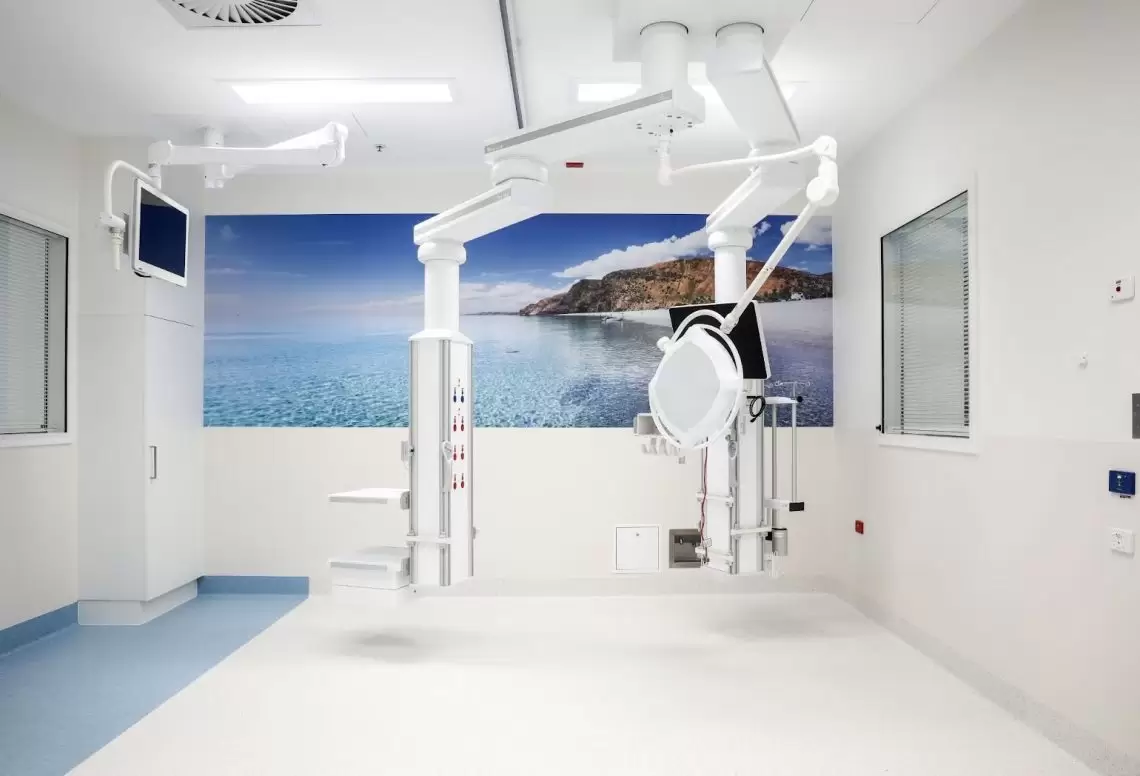Optimising and automating electricity systems in healthcare buildings is complicated. A new technical guide from ABB offers key design insights to electrical engineers and planners.
Turning hospitals and other health facilities into smart energy buildings is desirable from a cost-saving and sustainability perspective, but any solution has to account for their unique requirements. For one, they use a lot of power.
A European study spent a year measuring the electrical requirements of a hospital’s radiological equipment – three of its CT scanners, four of its MRI scanners, and their adjunct cooling systems. The power it took to scan 40,276 patients and run the cooling systems amounted to 1,107,450 kWh, equivalent to the yearly consumption of a Swiss town of 852 people. This was only four per cent of the hospital’s annual total energy consumption.
The amount of power required is just the first challenge, says Ian Richardson, Building Solutions Technical Specialist at ABB Australia. And it’s not the most important.
“Operational continuity is crucial in any building, but in emergency rooms, intensive care units and operating theatres, electrical supply interruptions can quite literally be a matter of life and death,” he says.
Ensuring hospitals have a suitable electrical system also means understanding the relevant safety regulations, says Richardson.
To assist with this, ABB has released a technical guide to help electrical engineers and planners select and install the appropriate electrical systems inside patient areas in medical locations or “Group Two” medical locations according to AS/NZS 3003 requirements. These locations include some of healthcare’s most sensitive areas, such as surgery and anaesthesia rooms.
Of course, there is a goal beyond safety that engineers should aim at – a healthy facility that provides optimal comfort.
“These aren’t ordinary building environments, they’re places of healing. The building has a role to play in the care of the patients, staff, and visitors,” says Richardson.
Technology that benefits care
Automation can make it simpler for hospitals to simultaneously achieve comfort while also delivering efficiency, safety and sustainability.
“A system such as ABB i-bus KNX can reduce staff workload through the automation of core functions such as lighting, shutter and blind control, heating, ventilation, security, and energy management,” says Richardson.
He offers the example of an automated HVAC system, which can be particularly energy intensive.
“You can manage the quality of the air by measuring the CO2 in the atmosphere and create positive pressure rooms for immunocompromised patients,” says Richardson. “Using the i-bus KNX along with high efficiency drives in a HVAC system, you can manage individual environments based on occupancy, use and comfort requirements, all while maximising cost savings.”
The same system is used for the lighting in Calvary Adelaide Hospital, South Australia’s largest private hospital, where 1,200 KNX devices are installed. Integrated with the building’s metering system, building management system and nurse call system, it gives maintenance and hospital staff full control of all lighting and can be adjusted according to a schedule, the presence of people, or manually.
Digital solutions such as ABB Ability Energy and Asset Manager mean these kinds of adjustments can be monitored and maintained remotely and at any time. This enables a range of positive outcomes. For example, patient rooms can be more easily personalised, and mandated periodic tests of emergency lights can be performed without interruption to the safe operation of the facility.
Richardson says that working with hospitals means going a step beyond what is normally required when designing a smart building.
“Considering the importance of their function, you could say it’s not enough for hospitals to be ‘smart’, they need to be ‘smarter’ buildings.”
Download this technical paper to find out how to choose and implement the correct electrical systems inside patient areas or Group 2 medical locations, according to AS/NZS 3003 requirements, or visit ABB’s webpage to learn about the company’s solutions for hospitals and healthcare.



![“[It] helps you see yourself as an engineer”: Rebecca Viney on her role as a volunteer student ambassador](https://createdigital.org.au/wp-content/uploads/2022/05/volunteer-hero-image-75x75.jpg)
